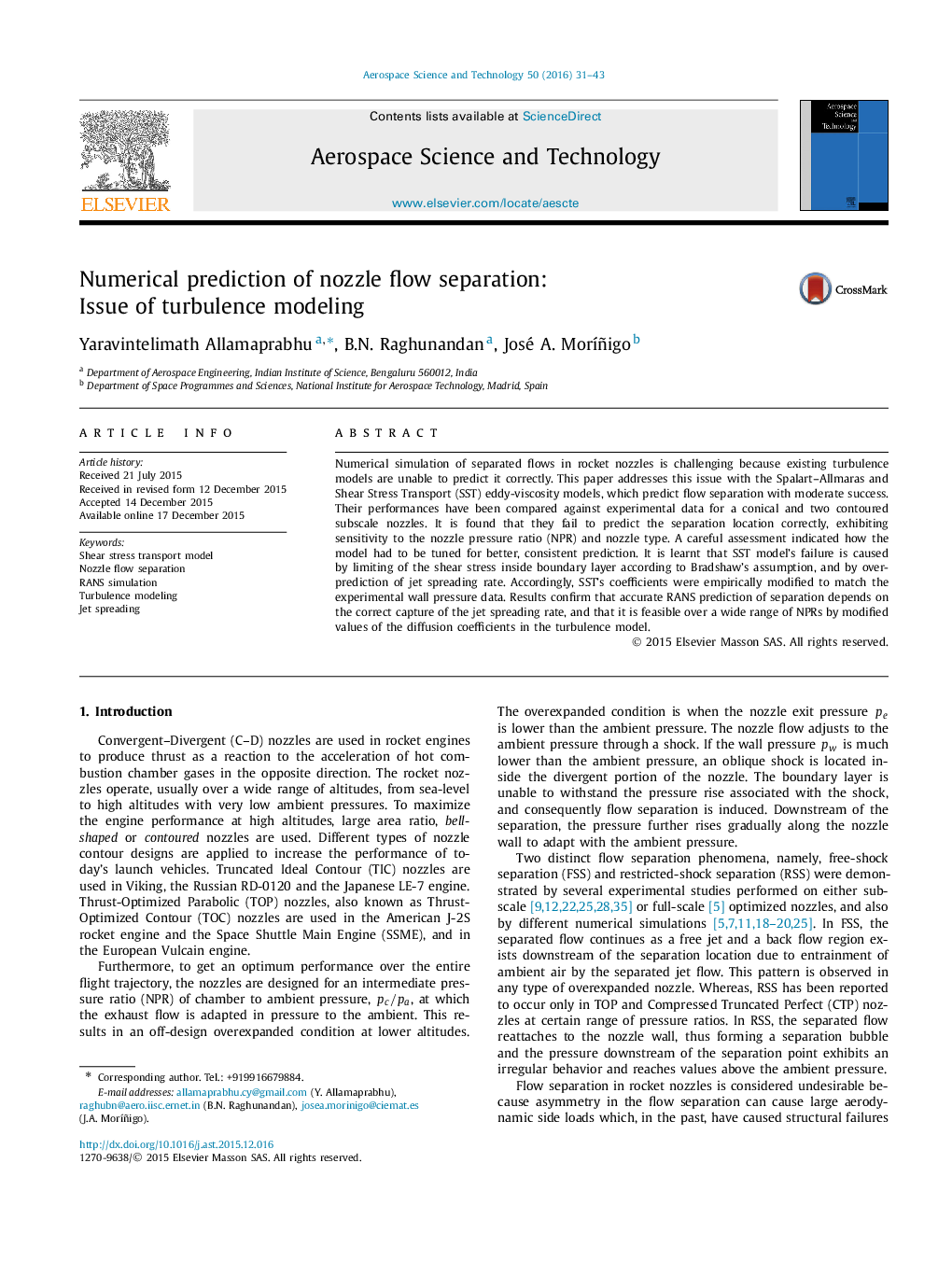| Article ID | Journal | Published Year | Pages | File Type |
|---|---|---|---|---|
| 1717608 | Aerospace Science and Technology | 2016 | 13 Pages |
Abstract
Numerical simulation of separated flows in rocket nozzles is challenging because existing turbulence models are unable to predict it correctly. This paper addresses this issue with the Spalart-Allmaras and Shear Stress Transport (SST) eddy-viscosity models, which predict flow separation with moderate success. Their performances have been compared against experimental data for a conical and two contoured subscale nozzles. It is found that they fail to predict the separation location correctly, exhibiting sensitivity to the nozzle pressure ratio (NPR) and nozzle type. A careful assessment indicated how the model had to be tuned for better, consistent prediction. It is learnt that SST model's failure is caused by limiting of the shear stress inside boundary layer according to Bradshaw's assumption, and by over-prediction of jet spreading rate. Accordingly, SST's coefficients were empirically modified to match the experimental wall pressure data. Results confirm that accurate RANS prediction of separation depends on the correct capture of the jet spreading rate, and that it is feasible over a wide range of NPRs by modified values of the diffusion coefficients in the turbulence model.
Keywords
Related Topics
Physical Sciences and Engineering
Engineering
Aerospace Engineering
Authors
Yaravintelimath Allamaprabhu, B.N. Raghunandan, José A. MorÃñigo,
